Nel 2012 Olivier Saillard – allora direttore del Palais Galliera, musée de la Mode de la Ville de Paris – durante il Festival d’Automne presenta presso il Palais de Tokyo “Impossible … Continua a leggere The Impossible Wardrobes (part I)


Nel 2012 Olivier Saillard – allora direttore del Palais Galliera, musée de la Mode de la Ville de Paris – durante il Festival d’Automne presenta presso il Palais de Tokyo “Impossible … Continua a leggere The Impossible Wardrobes (part I)
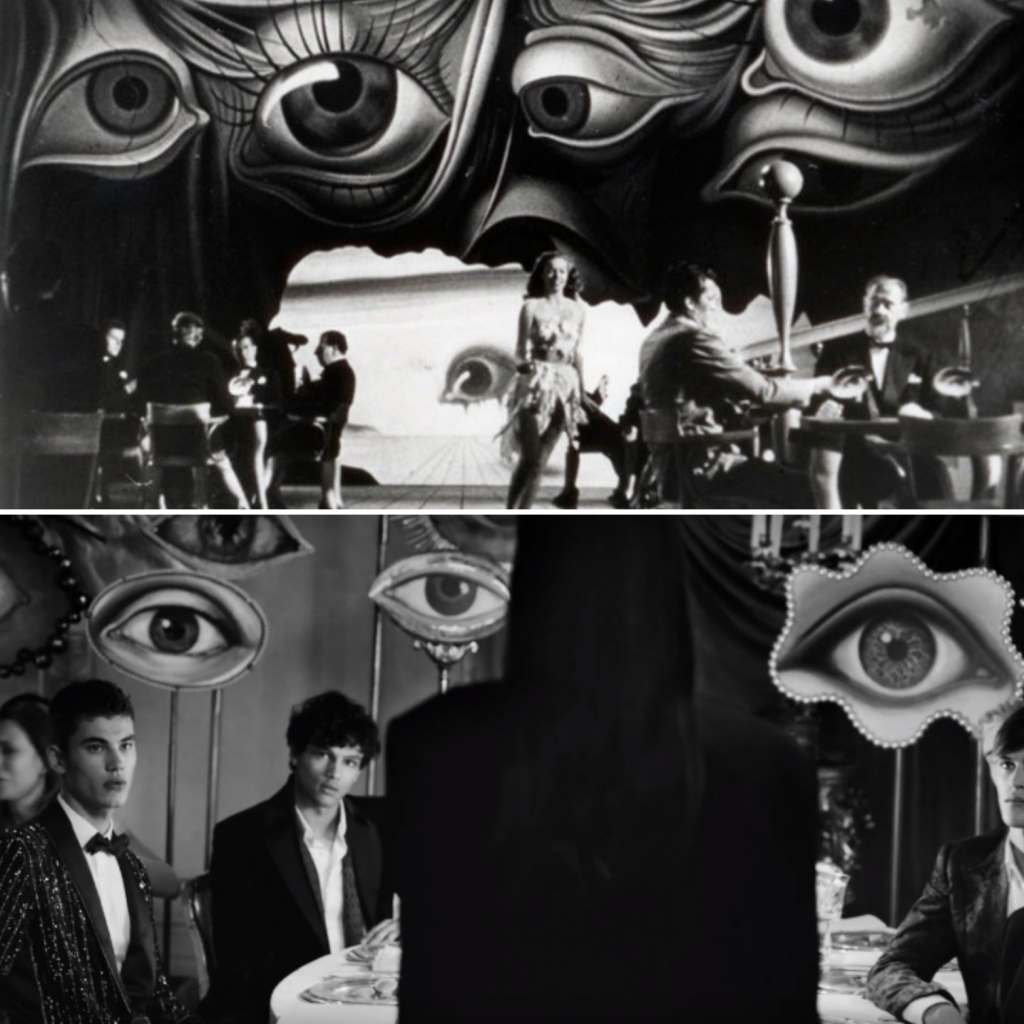
– Salvador Dalì – scenografia per il film “Io ti salverò” di Alfred Hitchcock, 1945
– Frame dallo spot per il profumo “Scandal” di Jean-Paul Gaultier, 2019
– Salvador Dalì’s dream sequence for Alfred Hitchcock’s movie “Spellbound”, 1945
– Frame from Jean-Paul Gaultier’s fragrance ” Scandal”, 2019
(scroll down for the english version)
Il 9 luglio 1962 Andy Warhol tiene, presso la Ferus Gallery di Los Angeles, la sua prima mostra personale. In questa occasione Warhol espone la celeberrima “Campbell’s Soup Cans”, l’opera simbolo, destinata a diventare il manifesto della Pop Art. Sviluppando un’idea della giovane gallerista Muriel Latow, che gli aveva suggerito di dipingere “qualcosa che chiunque potesse riconoscere”, l’artista compose trentadue immagini serigrafiche che riproducono i barattoli in latta della nota zuppa di pomodori.
Il celebre dipinto esposto alla Ferus Gallery, che all’epoca Warhol vende per mille dollari, nel 1996 viene acquisito dal MoMA The Museum of Modern Art, di New York, dove è tuttora è esposto e valutato 15 milioni di dollari.
Foto: Andy Warhol, “The Souper Dress” per la Campbell’s Soup, parte della campagna pubblicitaria per il lancio della “Vegetable soup”, 1968
On July 9th 1962, Andy Warhol held his first solo exhibition at the Ferus Gallery in Los Angeles. On this occasion Warhol exhibits the infamous “Campbell’s Soup Cans”, destined to become the Pop Art manifesto. Following on from a suggestion of the young gallery owner, Muriel Latow, who had suggested him to paint “something that anyone could recognize”,Warhol composed thirty-two silkscreen images that reproduce the tin cans of the famous tomato soup.
Warhol sold the painting for a thousand dollars at the time. It was then acquired in 1996 by the MoMA in New York, where it is exhibited and valued at 15 million dollars.
Photo: Andy Warhol, “The Souper Dress” for Campbell’s Soup Company, launched for the promotion “Vegetable Soup” 1968
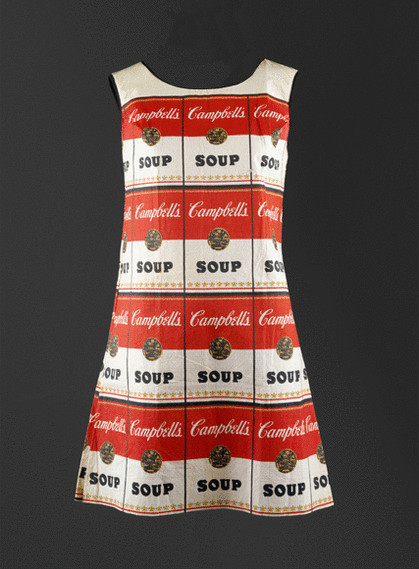
La performer Burlesque Zorita ritratta con l’abito di scena del suo numero “1/2 and 1/2” sul numero di Maggio 1942 della rivista “It”
– l’attore Michael Urie con una creazione di Christian Siriano all’annuale Met Gala, Maggio 2019
– Burlesque dance Zorita wearing her “bride & groom” costume (as featured in the “It” magazine issue, May 1942)
– Michael Urie wearing a custom made Christian Siriano creation while attending the annual Gala, at The Metropolitan Museum of Art, New York, May 2019
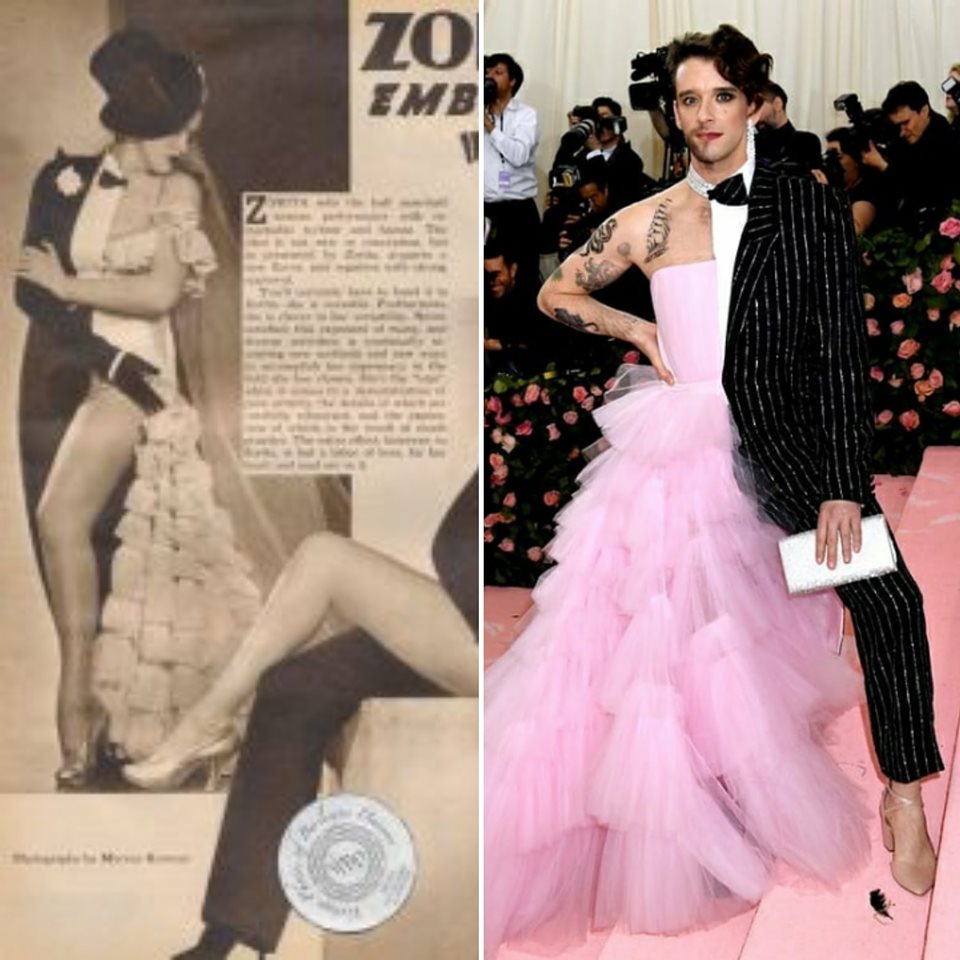
– Ritratto senza testa in età Vittoriana
– Jared Leto in Alessandro Michele per Gucci in occasione dell’annuale Gala presso il Metropolitan Museum of Art di New York, Maggio 2019
– Victorian headless portrait
– Jared Leto wearing a custom made piece by Alessandro Michele for Gucci while attending the annual Gala at The Metropolitan Museum of Art, New York, May 2019
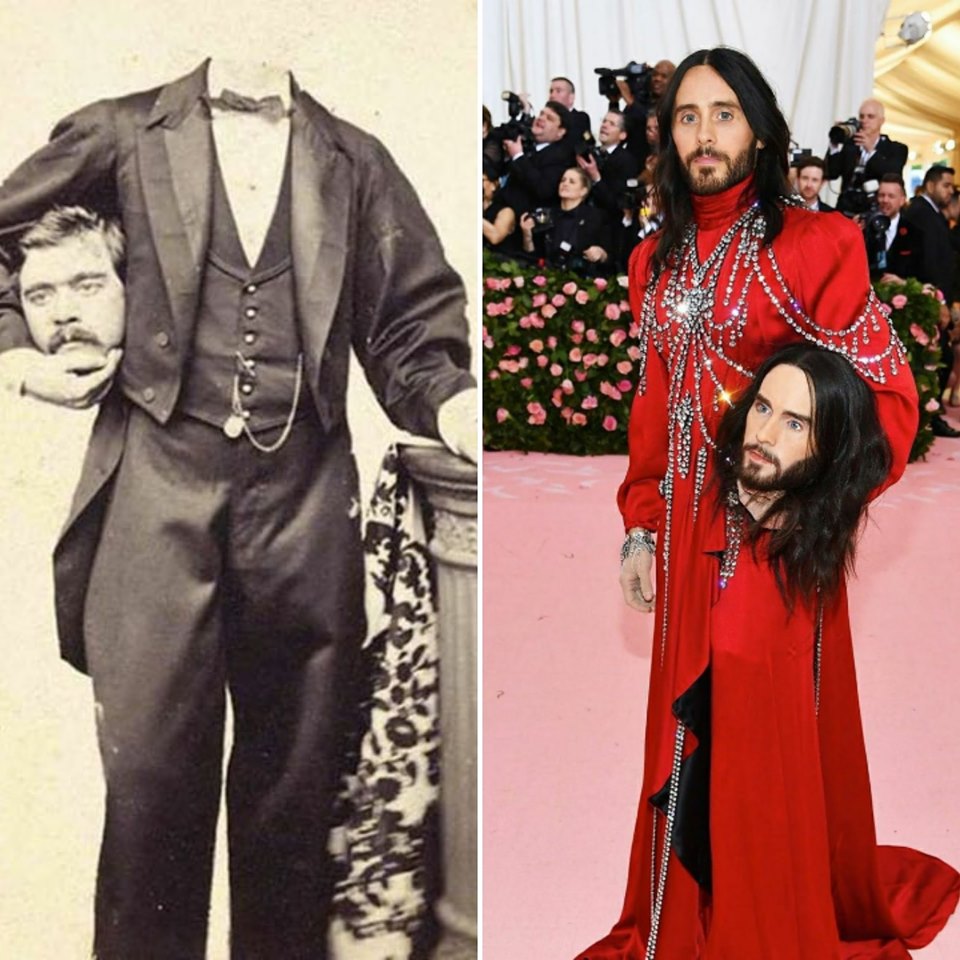
“L’essenza del Camp è il suo amore per l’innaturale: l’artificio e l’esagerazione“.
(Susan Sontag; “Notes on Camp”, 1964)
Nelle immagini:
– Franco Moschino, dalla collezione Primavera/Estate 1991
– Björk sul tappeto rosso alla 73ma edizione degli Oscars, 2001 (l’abito è una creazione di Marjan Pejoski)
Foto: © Wally Skalij/Getty Images
– Viktor&Rolf ; editoriale backstage della collezione “Fashion Statements” Alta Moda Primavera/Estate 2019
Foto: Marijke Aerden
Eng:
Camp is love of the unnatural: of artifice and exaggeration,”
(Susan Sontag; “Notes on Camp”, 1964)
In the pictures:
– Franco Moschino, from the Spring/Summer 1991 collection
– Björk, wearing athe swan dress by Marjan Pejoski, on the red carpet of the 73rd Academy Awards in Los Angeles, March 2001.
Photo: © Wally Skalij/Getty Images
– Viktor&Rolf ; “Fashion Statements” backstage editorial Haute Couture Spring/Summer 2019
Photo: Marijke Aerden

(scroll down for the english version) L’ispirazione: i cerchi concentrici creati da un sasso lanciato in acqua. “Nove gonne” è l’abito in seta e taffetas creato nel 1957 da Roberto … Continua a leggere Nove gonne (ita/eng)

– Hugo Ball in “Cabaret Voltaire”, 1916 – Gareth Pugh: dalla collezione Primavera/Estate 2018 Eng. – Hugo Ball in “Cabaret Voltaire” 1916 – Gareth Pugh: Spring/Summer collection 2018
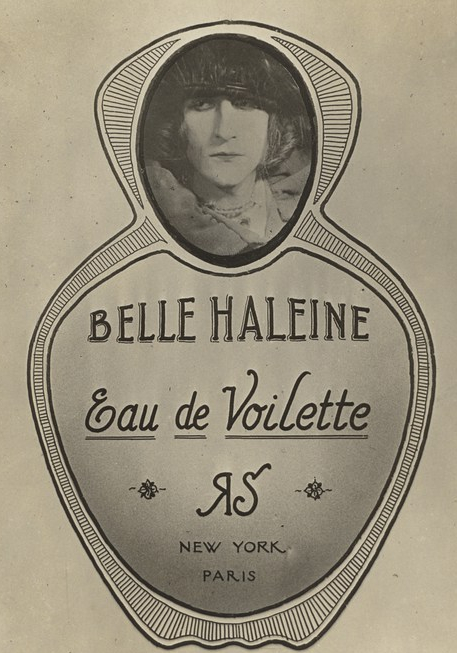
(scroll down for the english version)
La “Belle Haleine” eau de Voilette; un ready made Duchampiano realizzato nel 1921.
Per realizzarlo Marcel Duchamp si serve di un’autentica bottiglia di un profumo di Rigaud ( “Un air embaumé”, 1915), personalizzata con un’etichetta realizzata dall’amico Man Ray (su cui si scorge il ritratto del suo alter ego en travesti Rrose Sélavy)e posta in una custodia di velluto viola.
E’ interessante notare il gioco di parole: eau de voilette fa riferimento alla poesia di Arthur Rimbaud “Les Voyelles” ed il nome stesso della fragranza ha assonanza con l’espressione ” de longe haleine”: di lungo respiro…chiaro riferimento all’ “imframince” all’ “infrassotile”, ossia a quella dimensione artistica tanto trascurata quanto essenziale.
Questa bottiglia è chiaramente un unicum ed è appartenuta dal 1990 ad Yves Saint Laurent e Pierre Bergé, prima di essere battuta nel 2009 in un’asta da Christie’s per la “modica” somma di 8.9 milioni di euro.
Nella foto:
Man Ray- etichetta per la “Belle Haleine”, 1921
© Getty Museum, Los Angeles
Eng.
In 1921 Marcel Duchamp created a readymade inspired by a bottle designed by Rigaud (“Un air embaumé”, produced in 1915) Duchamp took the Rigaud bottle design, inserted an image of himself as Rrose Sélavy, his alter ego en travesti, , and called it “Belle Haleine: Eau de Voilette”. The French word “voilette” meaning a veil, a pun on “violette” the flower popularly used in perfumes at the time and a clear reference to Arthur Rimbuad’s poem “Les Voyelles”.
The word “haleine,” meaning “breath”, is a reference to Duchampian “imframince”.
This object landed in the collection of Yves Saint-Laurent and Pierre Bergé in 1990, and was then sold at auction at the Christie’s in 2009 for a jaw-dropping amount of 11,489,968 dollars.
Photo:
Man Ray – label for the “Belle Haleine”, 1921
© Getty Museum, Los Angeles

(scroll down for the english version) Pur applicando le nozioni della sartoria tradizionale, Elsa Schiaparelli ama giocare con le silhouette classiche, alle quali aggiunge dettagli o materiali inusuali. Come è … Continua a leggere Darksided Monograph_ Elsa Schiaparelli (part III), “Lo Scheletro” (ita/eng)